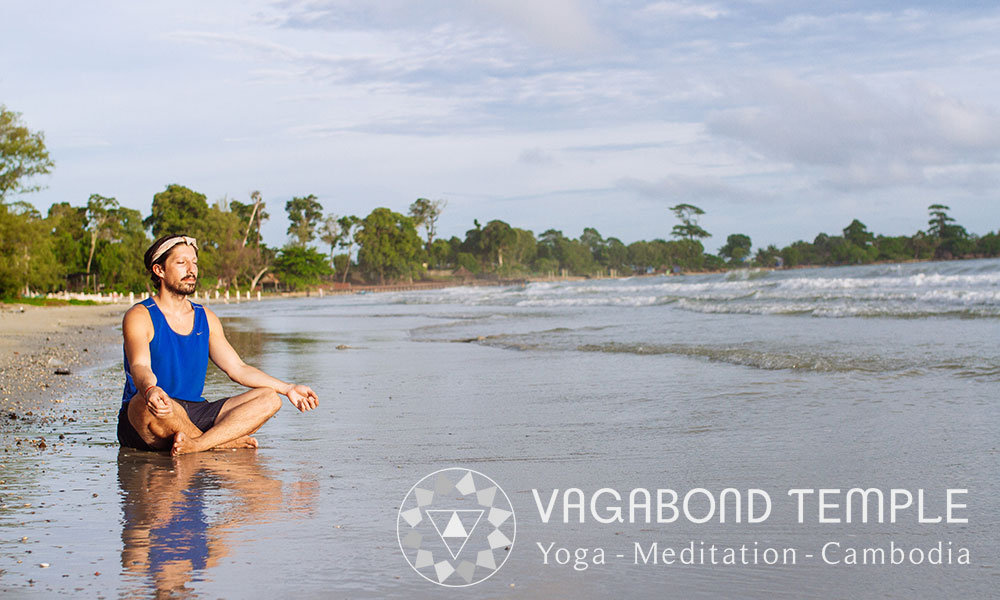Niyama – Mastering Our Inner Space

Yoga is about so much more than the postures we perform in classes; it is multifaceted system designed to bring our body mind into harmony, and ultimately leading us into unity with all beings. Rather than being at the mercy of our thoughts and emotions, by following Yoga practice we can bring them under our control; this type of empowerment can free us from the frustrations of everyday life and bring us to an optimal state.
A powerful method of mental training is given in the ancient text, the “Yoga Sutra” which invites us to practice Niyama – the cultivation of habits that bring control to our inner world. Niyama is one of the Yoga Sutra’s 8 Limbs of Yoga and an essential part of the practice; it is divided into 5 sub-sections, known as the 5 Niyamas.
1) Saucha (purification)
This Niyama is the process of removing tension. In the West we normally think of tension as a physical problem, but Yoga does not differentiate between the mind and body in this way. Physical tension in the body is understood to occur when we are holding on to difficult emotions, such as traumas or painful experiences from the past. As well as the physical and emotional layers, the Yogic tradition also operates on an energetic level (in the same way as treatments such as Reiki and Acupuncture). Tension can occur at all levels, and they are strongly connected (for example a massage can bring up strong emotions).
The purification of the mind, body and energy systems were seen as so important that early practitioners of Saucha often went to extreme lengths, and some of these very severe practices still exist today with people threading cloths through there nostrils or drinking salt-water to induce vomiting. Perhaps we do not need to go so far! But many of the Yoga postures commonly practised today were developed for the purpose of removing physical, mental and energetic blockages. For example, the popular modern system of Iyengar Yoga uses postures that improve our alignment and correct the imbalances caused by our unhealthy postural habits in the West.
Saucha also applies to our thoughts: having negative thoughts about the self or others should be avoided. Here there is a parallel with the practice of Ahimsa (non-violence) which is another important aspect of Yoga practice and forms one of the 5 Yamas. See Yama: Bringing Yoga Practice To Daily Life
2) Santosha (contentment)
Santosha is the inner-state of acceptance: where we are content with the things we have and accepting of the circumstances in which we find ourselves. If we think back to periods in our life where we felt content, we will find that these were the times when we desired nothing; we were present in the moment rather than daydreaming about the past or future. Our modern society often breeds discontent: we are conditioned to be constantly striving to improve our status and acquire new possessions. In reality we do not need much to feel content, and acquiring the objects of our desire often brings us further away from a state of Santosha as our happiness comes to depend on external things.
There are strong links between Santosha and other aspects of the Yoga path such as Aparigraha (non-possessiveness) and the meditative practices that allow us to transcend our everyday desires.
3) Tapas (discipline)
Interestingly, the word Tapas also means “heat”. Heat and discipline are both seen as creative energy in the Yogic tradition. Without this energy, nothing can begin. Many Hindu texts contain a parallel to the Western Big Bang theory – it was this heat energy that brought the Universe into existence.
We may have many dreams, such as to write a book, or to master a Yoga pose. However without Tapas none of these dreams can be realised. Starting a new discipline requires us to push ourselves out of our comfort zone, but we should be realistic and gentle on ourselves. A beginner to meditation deciding to meditate for 2 hours a day will likely be overcome with frustration and not continue, however starting with just 20 minutes will soon encourage longer practices. This “middle way” approach is advised with any new practice.
As well as being used to acquire a new positive practice in daily life, setting a Tapas can be a powerful way to break an addiction or another destructive habit. It can be thought of as a vow: for example, “I will not smoke a cigarette today”, “I will have an hour to myself every day” etc. Stating it clearly like this is a powerful way of setting our intention, telling our mind that we are able to do it. It is useful for a Tapas to have a time-period associated with it, after which it can be renewed or changed, for example the vow to not smoke a cigarette today, once realised, could be extended to a week. In this way we can bring powerful changes to our lives, but still working at a gentle pace.
In Western society we are taught to be disciplined in school and our working life, but not in terms of our spiritual development and acting for the benefit of others.
4) Svadhyaya (self study)
This is a fundamental element of all Yogic practices – to learn from your own personal experience. We may study a hundred books about how to ride a bike, but still will only actually be able to do it through practising. The same applies to Yoga; in reality there is no such thing as a Yoga teacher, only those who encourage us to teach our self. The fact that the entire Yoga Sutra is composed of just 196 short sentences is a testament to the importance of Svadhyaya, each sentence encourages us to think for ourselves and invites us to develop personal practice.
All of the great yogis who developed the practices we use today did so through self-study; each of us has the potential access to the guru within.
5) Ishvara Pranidhana (devotion / attachment to divine)
In Yoga, ALL is said to be divine, and of course this includes ourselves and other people. The famous greeting “Namaste” means “I great the divine inside you”, or “the divine light within me honours the divine light within you”.
Even people who irritate or cause harm to us are thought of as divine, the aspect which bothers us only exists on the most superficial level; on the ultimate level they share the same divinity as ourselves. This attitude helps us to cultivate Ahimsa (non-violence) as we learn to feel love and respect for even our enemies.
The Benefits Of Niyama
For anybody developing a Yoga practice, turning the attention inwards and gaining control of our inner world is of great benefit. Without the practice of Niyama, we may find ourselves in a state of inner conflict that prevents us from moving forward. Mastery of the thoughts and emotions allow us to go much deeper into our practice and move toward an optimal state of being. Niyama is a complete system of inner development: removing physical and mental tension, finding our contentment, developing personal discipline, trusting our inner teacher, and recognising the divine in everything.



